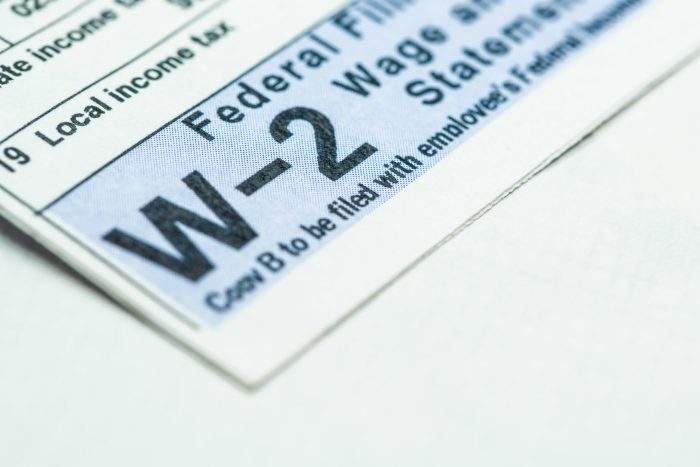The Small Business Guide to Payroll Forms

Small business owners come from a broad range of backgrounds and beliefs. If they have one thing in common, it’s that they find payroll time consuming and frustrating.
The payroll tax laws are confusing because you have a set of federal laws and a separate set of state and local laws. Make one mistake, and you could be in for a fine. The average small business paid the IRS $845 in payroll tax fines.
The best way to avoid those mistakes is to get organized from the start. You have to know which payroll forms are necessary and when you need them.
Read on to learn what the mandatory payroll forms are and when you need them.
IRS Form SS-4
Before you hire your first employee, you have to have an Employer Identification Number (EIN). Your EIN is your business identification number, the same way the IRS identifies you by social security number.
This is used to identify your business and compare your reported payroll and your employees’ reported income. Any discrepancies can trigger an audit.
Getting an EIN usually requires that you fill out Form SS-4, but the IRS made this much easier for business owners. You can fill out an online application and get your EIN in a few minutes.
USCIS Form I-9
There are a few forms that you need to have new hires fill out on their first day. The I-9 is one of them. This form asks new hires if they are legally entitled to work in the United States.
This form is required by the United States Citizenship and Immigration Services within three days of starting. You have to verify that it is accurate and keep this form on file.
IRS Form W-4
A W-4 form is another form that new hires need to fill out. You’ll need this for processing payroll. Form W-4 serves as your guide to withhold income taxes from an employee’s paycheck.
The employee should fill this out completely to ensure enough taxes are withheld. If they’re not having enough funds withheld for taxes, they’ll wind up with a tax bill in April.
IRS Form W-9
Are you hiring independent contractors? They’ll need to fill out form W-9, which verifies the contractor’s name, address, and taxpayer ID number.
The taxpayer ID number could be a social security number or EIN number, depending on the taxpayer status of the contractor.
The IRS does require that you have every contractor fill this out and keep it on file for four years.
IRS Publication 15-T
You got the right paperwork out of the way when you hired your employees or contractors. What happens when it’s time to pay them?
You’ll need to have their W-4 forms and turn to IRS Publication 15-T. This is the withholding table that shows you how much you should withhold in federal income taxes.
Don’t forget that the federal income tax withheld is in addition to FICA, and state income taxes. Those are calculated separately.
Direct Deposit Forms
OK, you calculated payroll. Now what? It’s time to cut your payroll checks and distribute pay stubs to employees.
Most employees prefer to get paid via direct deposit. You’ll need to set that up with your bank and have employees fill out a direct deposit form. They usually need to include a copy of a voided check to ensure the funds go into the right account.
IRS Form 941
Employers are responsible for filing a quarterly federal tax return to reconcile how much you withheld in taxes, and how much you paid in payroll taxes.
You also need to document any adjustments you made you previously reported numbers. For example, if you pay payroll taxes on a monthly basis and made changes after the fact, they need to be reported here.
This form is required to be submitted by April 30, July 31, October 31, and January 31 of each year.
End of Year Tax Forms
The first month of the year is busy for small business owners. It’s when tax season officially begins. You have to get your last estimated tax payments in and distribute payroll forms to your employees and independent contractors.
These are the forms you’ll need to stay in compliance with the IRS.
IRS Form W-2
The W-2 form is required for all employees. This shows how much they earned for the entire year and how much taxes were withheld.
They’ll use this when they file their federal and state income tax returns. You need to distribute these forms by January 31.
IRS Form W-3
The IRS requires that you send copies of W-2 forms to them as well. You could do that, or you can send a W-3 form instead. This is a smaller version of the W-2 and lets you fit information for more than one employee on this form.
No matter which forms you choose to send to the IRS, you need to send them to the IRS by January 31.
IRS Form 1099 NEC
You probably heard of the 1099-MISC. That form doesn’t exist anymore because the IRS replaced it in 2020 with the 1099 NEC.
1099 NEC is similar to a W-2 in that it’s an annual tally of earnings. The exception is that this is for independent contractors.
Understanding Payroll Forms for Stress-Free Payroll
Running and managing payroll isn’t easy. Yet, small business owners take on this responsibility, only to be confused and frustrated. There are things that can be done to alleviate this frustration.
Get organized before you get started. That first step is knowing what payroll forms you need and when. Some forms are necessary when you hire and employees, others to run payroll, and still others for payroll taxes.
Then there are the forms you need at the end of the year, like 1099s and W-2s. Get these forms categorized in folders to make it much easier to use the right form at the right time.
For more business finance tips, click on the Business tab at the top of the page.





